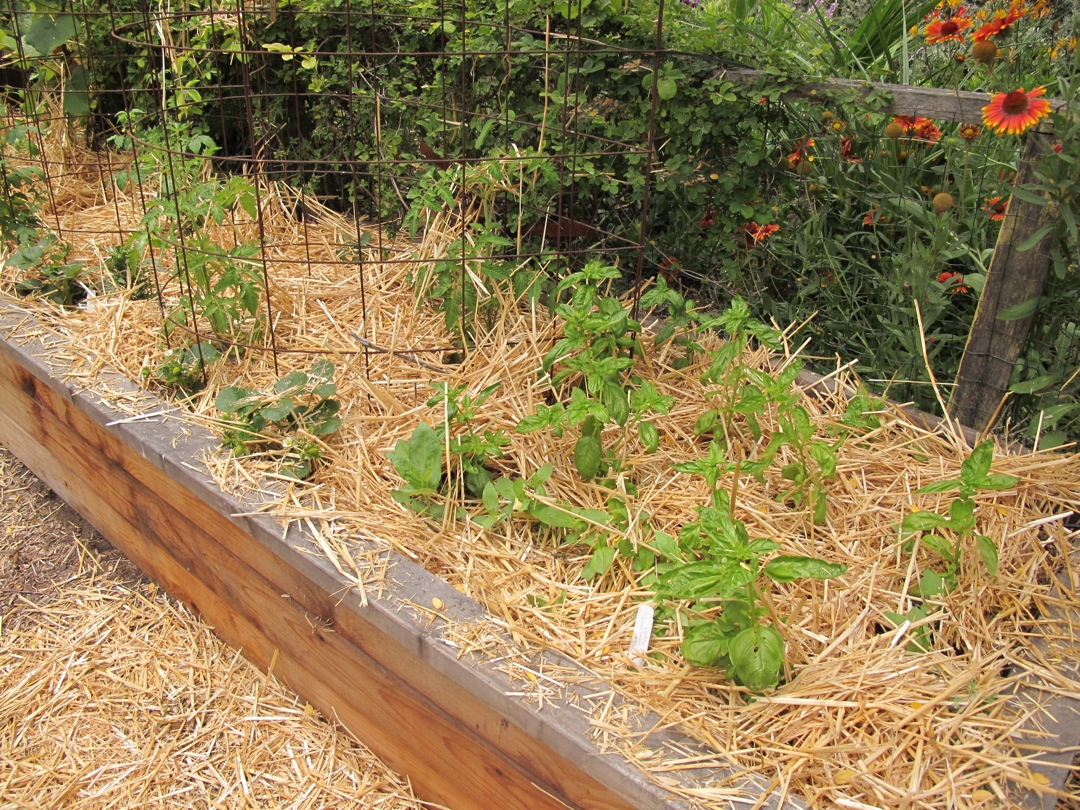Yeah! It’s time to plant summer veggies in warm climate vegetable gardens.
- Tomatoes, eggplants, peppers, and other summer vegetables are good to plant now, whether from seed or from seedling.
- Wait until the end of the month when the soil is warmer before planting basil, pumpkins, and squashes.
- Every year, I trial new vegetable varieties in my garden. Last year’s tomato trial winners were a both grape tomatoes; ‘Nova’ is a golden yellow grape tomato that packs a flavor power punch, while red grape ‘Valentine’ is both delicious and prolific over a long period of time. I started them both from seed in March. They’ll go into my raised beds later this month.

‘Valentine’ grape tomato was a taste and production winner in my garden last year.
- Determinate or “dwarf” varieties of your favorite veggies are best for container gardens. They may be smaller, but they still need plenty of room. A fifteen-gallon nursery can fits one tomato plant, two eggplants, OR two pepper plants.
- Prepare the soil in your vegetable beds and containers with generous dose of earthworm castings, compost, and granular organic vegetable fertilizer.
- V-shaped tomato cages always fall over, so instead, use a sheet of concrete reinforcing mesh held together on the short ends with zip ties. That makes a freestanding cylinder, about three feet in diameter. Two tomatoes fit perfectly into that space.
- Concrete reimforcing mesh also works to support climbers like cucumbers or melons. Put the support in place before you plant.
- Plant lots of basils! There are so many kinds – green leaved and purple leaved, even some speckled leaf varieties. Perennial basils live for many years and are excellent bee magnets but their leaves aren’t as tasty as annual basils. For annuals, choose from the traditional large leaf Italian like ‘Genovese’ to ‘Sweet Thai’, which is delicious in Asian cuisines. Aromatic ‘Holy Basil’ is used for teas, medicinals, and essential oils. Lemon basil makes a great garnish. There are many more to choose from, too.

Multi-colored basils and variegated coleus make a surprise combination in the vegetable garden
- Plants in the nightshade family – tomato, pepper, eggplant, tomatillo – are all susceptible to the same suite of soil pathogens. If you plant them in the same soil year after year, they produce less and less. So instead, have at least two garden beds. Plant them all in one bed the second year. Move them to the other bed in the second year. Move them to the original bed in the third year, and continue with that rotation.
- Outfit your vegetable garden with an inline drip irrigation system or soaker hoses so you don’t water vegetables from the top. Wet leaves make plants vulnerable to fungus, mildew, and mold. That’s a sure way to shorten the life of your vegetable plants.
- Mulch your vegetable garden with straw rather than wood mulch. Make sure you get straw, NOT HAY. Hay has seeds so if you mulch with hay, you’ll grow hay. Straw is what’s leftover from the grain harvest so while you might get a few sprouts, they won’t take over your garden.

Straw is the best mulch for your vegetable garden
My TV show, A Growing Passion® connects plants, people, and the planet. Season Seven debuts with an episode about the fascinating world of Bromeliads, on April 25that 8:30 pm on KPBS TV. New episodes air on Thursday evenings through summer, all repeating on Saturdays at 3:30 pm. Find all shows online, too, at www.AGrowingPassion.com





